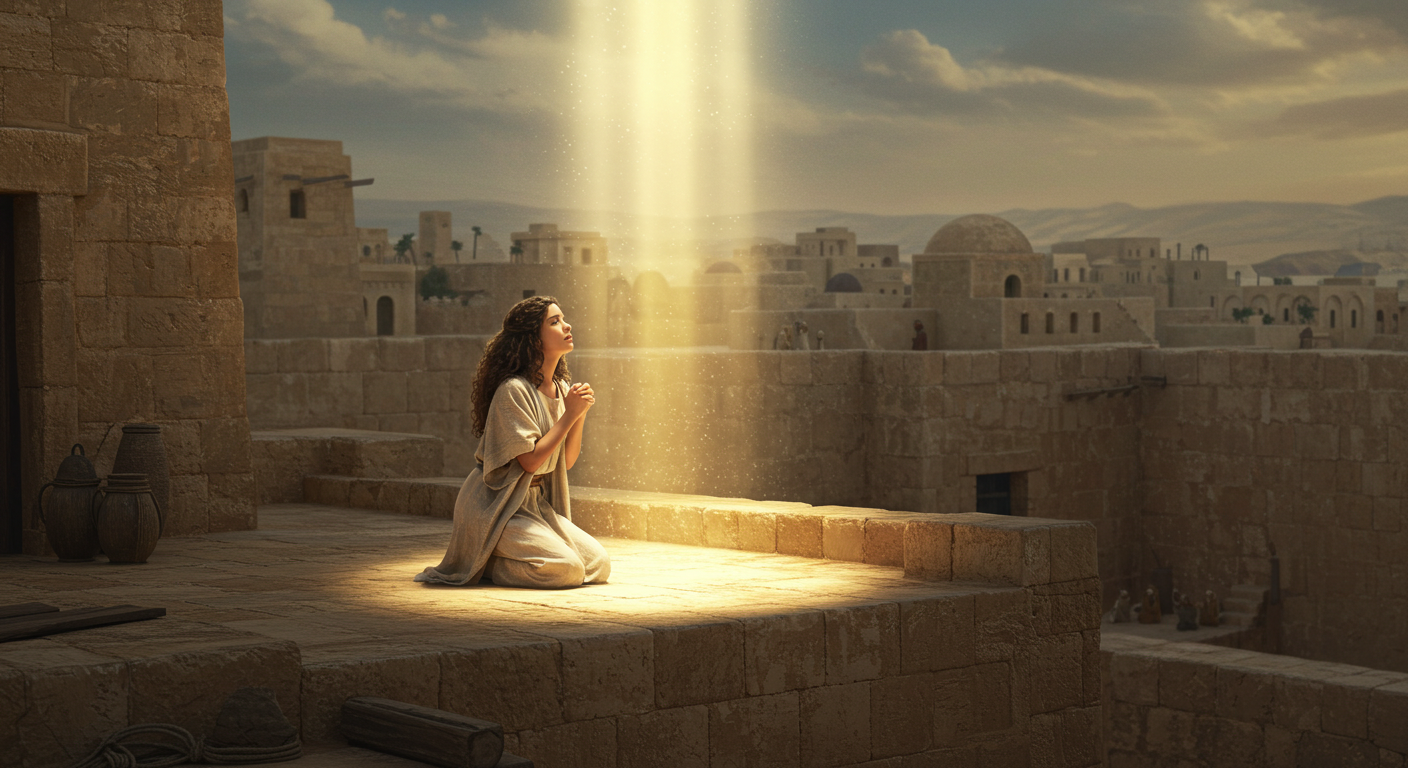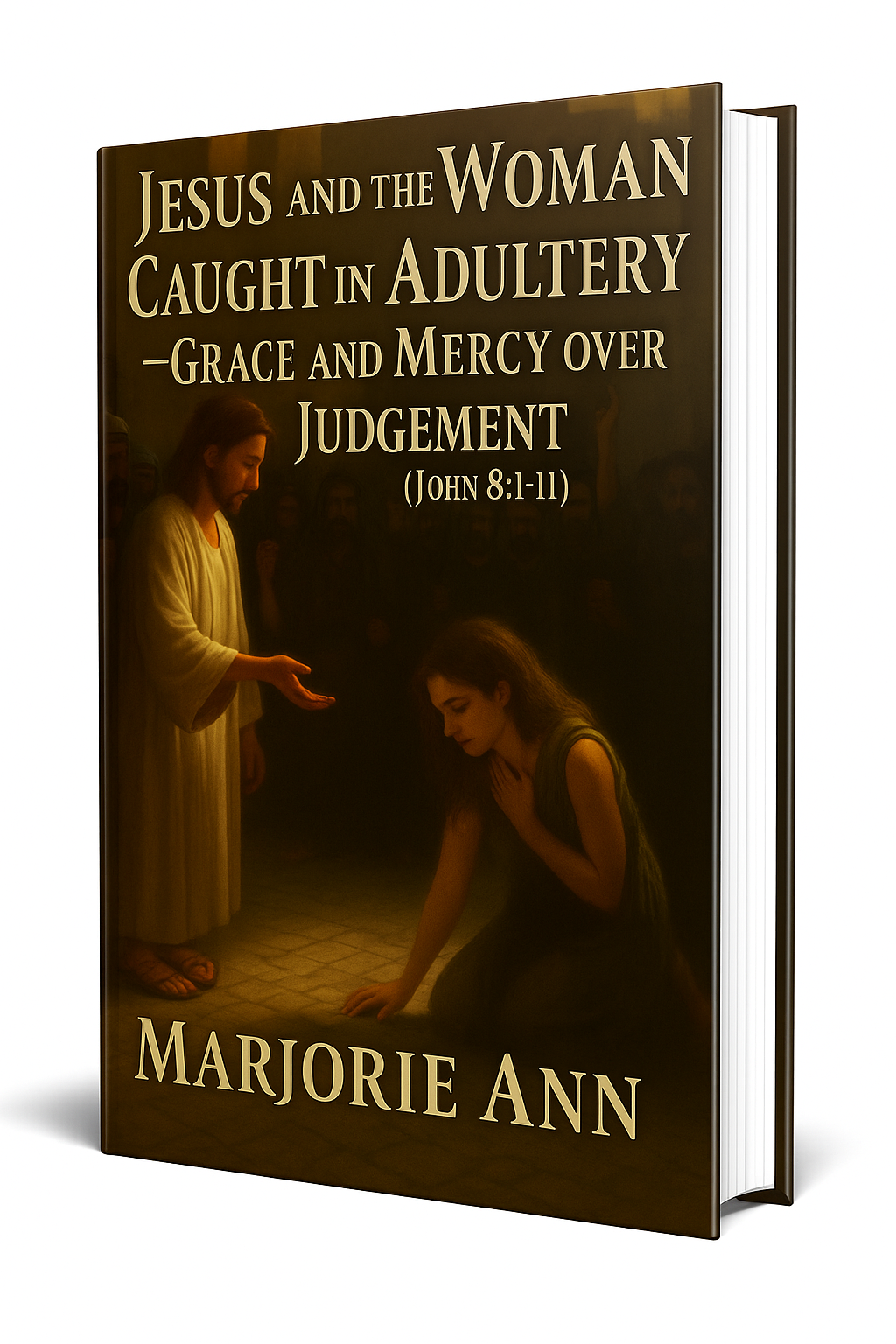Rahab’s Redemption – From Outcast To Ancestor Of Jesus
You’re about to take a close look at one of the most surprising, encouraging stories in Scripture: how a woman with a checkered past becomes both an exemplar of faith and an ancestor of Jesus. Rahab’s story shows you that God specializes in turning messes into missions, failures into family, and outcasts into heirs. When you read her story slowly, it gives you hope and direction for your own spiritual journey. In this article, you’ll see the details of her faith, the powerful symbolism of the scarlet cord, the theological significance of her inclusion in Jesus’ genealogy, and practical ways you can respond. This is Rahab’s redemption in a nutshell—God’s redeeming love at work in someone who seemed least likely to be chosen.
Who Was Rahab?
Rahab’s background makes her an unlikely biblical heroine. She’s introduced as a resident of Jericho, described in the narrative context as living in a city opposed to Israel. The text suggests she was involved in prostitution, which made her an outcast by Israelite standards and a social pariah in her own community. Yet the Bible doesn’t leave you in the realm of rumor; it gives you the facts of her life and the actions that demonstrate a radical turn toward God. When you face your own past mistakes or social marginalization, Rahab’s life demonstrates that God notices faith more than reputation.
The Setting: Jericho and the Israelite Spies
When Joshua sent two spies into Jericho, their mission was reconnaissance to learn about the city’s defenses and the people’s morale. Those spies ended up in Rahab’s house, which was built into the city wall—an image that is both literal and symbolic. You can picture the spies clinging to the inside of the wall as they listened and planned. Rahab sheltered them, hid them from the city authorities, and then struck a bargain to secure her family’s safety when the city fell. The narrative begins a chain of events that will change her life forever. See the initial encounter in Joshua 2:1.
Rahab’s Act of Faith
You don’t have to read far to see that Rahab’s decision wasn’t merely a pragmatic move for survival; it was a step of faith. She acknowledged the God of Israel in a remarkable confession that set her apart from the rest of Jericho. This confession is both theological and personal—she recognizes God’s supremacy, recalls the stories of what God did for Israel, and expresses hope for mercy based on her actions. In doing so, she moves from practical cooperation with Israel to a genuine belief in the God who had delivered Israel from Egypt. Her words and actions together provide a compelling example of genuine faith that you can emulate. Read her confession in Joshua 2:9–11.
What Her Faith Looked Like in Practice
Faith for Rahab was not abstract; it was lived. She hid the spies under stalks of flax, misled the soldiers who came searching, and negotiated the terms for her and her family’s safety. Her faith manifested in risk and sacrifice—she jeopardized her safety to protect God’s servants. That kind of tangible faith matters in your life, too. Faith and works are not opposed here; they demonstrate one another. When you trust God, He will lead you to acts that reflect that trust. See her practical actions in Joshua 2:6-7.
The Scarlet Cord and the Covenant
One of the most memorable elements of Rahab’s story is the scarlet cord she was instructed to use as a sign. The spies told Rahab to tie a scarlet cord in her window so that she and her household would be spared when the Israelites invaded Jericho. This simple, vivid symbol becomes a tangible sign of the covenant protection extended to her because of her faith. The scarlet cord is rich in symbolic resonance—you can’t miss the echo of deliverance, protection, and identification with God’s people. It’s a visual reminder that God marks those who trust Him. Read about the instruction to use the cord in Joshua 2:18 and the execution of that promise in Joshua 6:22–25.
Theological Symbolism of the Cord
When you think of the scarlet cord, connect it to the broader biblical themes of blood, protection, and covenant. While the cord is not blood itself, its color calls to mind the protective blood of the Passover and the covering provided by God. Rahab’s window became a marker—not of isolation, but of inclusion. She was identified with the people God had chosen, even though she was not ethnically Israelite by birth. This is a powerful reminder that God’s covenant promises extend beyond ethnic lines when people respond in faith.
Rahab in the Conquest Narrative
The fall of Jericho is one of the most dramatic military episodes in the Old Testament. The whole city’s defeat came after a miraculous series of events directed by God. After the walls fell, Rahab and her household were spared because of the promise made to her earlier. She and her family were brought out of the destruction to live among the Israelites. This narrative move seals the transformation from outsider to insider—she literally moves from a Canaanite city into the community of God’s people. Her rescue is not merely physical; it’s a spiritual transition that sets the stage for the rest of her life and legacy. See the account of her rescue and integration in Joshua 6:22-25.
Rahab in the Hall of Faith
Rahab’s faith didn’t go unnoticed in the New Testament. In Hebrews 11—the chapter often called the “Hall of Faith”—Rahab is praised for her act of faith that resulted in deliverance from destruction. The author of Hebrews uses her example to show that faith is often expressed in risky, tangible decisions. Rahab’s courage is set alongside other great figures of faith, reminding you that God honors faith expressed in action, regardless of a person’s past. See her commendation in Hebrews 11:31.
Why Her Example Matters to You
When you read Rahab’s inclusion in Hebrews, you should feel both encouraged and challenged. Encouraged because there is precedent for God to use imperfect people in extraordinary ways. Challenged because faith in your life should move you to action. Rahab didn’t receive praise for her profession only; she was acclaimed for what she did because of what she believed. That pattern helps you see that genuine faith disciplines you into acts of mercy and courage.

Rahab and Works: A Lived Faith
James brings Rahab into a theological discussion about the relationship between faith and works. He points to Rahab to illustrate that faith without works is dead—her faith was demonstrated and perfected by her actions. This doesn’t mean you earn your salvation by works; instead, works are the fruit and evidence of genuine faith. You can see this balance in Rahab’s life: belief preceded action, and action confirmed belief. Reflecting on Rahab can help you examine whether your faith is alive, manifested in mercy, protection of others, and alignment with God’s purposes. Read James’ reference to Rahab in James 2:25.
Rahab in Matthew’s Genealogy
Perhaps the most striking testimonial to Rahab’s redemption is her inclusion in the genealogy of Jesus Christ. Matthew lists her among the ancestors of Jesus, nestled in the line that leads from Abraham to David to the Messiah. That means you can trace the eternal plan of redemption through a woman who once lived under the stigma of her occupation and society’s scorn. What an astonishing testament to God’s ability to turn your story around. Rahab’s lineage into the family of Jesus shows that God doesn’t merely rescue—you become part of His unfolding story. See her mention in Matthew 1:5.
This inclusion underscores the radical nature of grace: it reaches into your past, transforms you, and places you into the lineage of blessing. When Matthew records Rahab as an ancestor of Jesus, he’s making a theological point: the Messiah’s roots include people like you—people who needed redemption and received it.
Theological Significance of Her Redemption
You should not miss the theological depth in Rahab’s journey. Her story combines covenant, grace, faith, and works into a portrait of redemption. It challenges narrow definitions of God’s people and opens the door to a more expansive understanding of covenant inclusion based on faith. The scarlet cord becomes a vivid sign of how God marks and protects sinners who trust Him. Theologically, Rahab’s life foreshadows how God’s grace will extend to the nations through the line that culminates in Christ. In her life, you see God’s pattern: identify, believe, act, and be grafted into the people of God.
When you reflect on Rahab’s redemption, you encounter a divine economy where forgiveness is real, transformation is possible, and a new identity is offered to those who turn to God in faith.
Lessons You Can Learn from Rahab
There are practical lessons you can apply to your life from Rahab’s story. First, God is more interested in your response to Him than your pedigree. Second, authentic faith will usually involve risk and action. Third, God’s grace is open to those who are willing to confess and follow. Rahab’s story helps you understand that your past does not disqualify you from God’s future. She models humility, courage, and obedience—qualities that will help you walk into God’s plan for your life.
When you meditate on Rahab redemption, you should feel both humbled and hopeful—humbled because you see your need, hopeful because you see God’s willingness to redeem.
How Rahab’s Story Shapes Evangelism and Community
Rahab’s inclusion in Israel and later in Jesus’ genealogy invites you to consider how your community treats outsiders. If God welcomed Rahab, your church should be a place where sinners find refuge and transformation. That has practical implications for how you engage in evangelism and welcome people with messy backgrounds. Rahab’s story challenges you to make your church a place where transformation is expected and testimonies are celebrated.
Thinking about Rahab’s redemption should reshape your posture toward others. When you encounter people who feel unworthy, remember that God delights in redeeming the broken. Your ministry should mirror that grace.
Common Objections and Honest Questions
You might have objections or wrestle with hard questions about Rahab. “Was she really a prostitute?” “Is it problematic that she married an Israelite leader?” “Does this mean moral compromise is tolerated?” These are fair concerns. The biblical narrative doesn’t excuse sin; rather, it highlights what God can do in the midst of human failure when a person turns to Him. Rahab’s faith led her away from her former life, and the text affirms her change. The Bible holds both truth and grace in tension—your church must do the same by calling people to repentance while offering them community and hope. Remember that Rahab’s redemption is not a license for sin; it is a showcase of transformation.
When you consider Rahab’s redemption, let the story direct you toward repentance and restoration rather than moral laxity.
Practical Steps You Can Take Today
If Rahab’s story speaks to you, there are practical steps you can take to align your life with hers—steps that encourage faith, action, and integration into Christian community.
- Confess the truth about your past or present struggles and ask God for mercy and direction. Honest confession started Rahab’s journey.
- Take a tangible step of faith that demonstrates trust, whether it’s reaching out to someone in need, joining a small group, or serving in your church.
- Find a community that will welcome you into accountability and celebration, a community that models Rahab’s welcome into Israel.
These steps are not magic formulas; they are movements of faith. Rahab’s redemption shows you that small acts of faith can lead to big changes. As Rahab acted to protect God’s servants, you can act to serve God’s people.
Rahab’s Legacy: From Outcast to Ancestor of Jesus
You can’t miss the full arc of Rahab’s life: she begins as an outsider, acts in faith, receives God’s mercy, and ends up in the lineage of the Messiah. Her story moves from the shame of a life labeled by others to the honor of being part of God’s redemptive work. When you study the genealogy in Matthew and see Rahab’s name listed, you’re confronted with the reality that the story of salvation includes unexpected characters. This should comfort and embolden you—it tells you that no person is beyond God’s reach.
When you remember Rahab’s redemption, you are reminded that God can—and will—use your story for His glory if you trust Him and act in faith.
Rahab’s Example for Leadership and Discipleship
Rahab’s life also offers an example for leadership within the church. Leaders should be willing to embrace those with complicated pasts, shepherd them into maturity, and celebrate their stories. Discipleship involves seeing potential where others see failure and walking patiently with people as they grow. Rahab was brought into the community, not just for safety, but for transformation. Your leadership should aim at spiritual formation that produces obedient, courageous disciples like her.
Think about how Rahab’s redemption can inform your approach to mentoring, small groups, and church outreach.

Final Reflections
As you close this reflection on Rahab, remember three key truths her life teaches you: God sees your heart more than your history; faith expressed in action matters; and redemption can place you in the grand story of God’s purposes. Rahab’s life permits you to hope radically and to act courageously for others. Her scarlet cord is more than a relic of history—it’s a symbol for you of God’s promise to protect and incorporate those who come to Him in faith.
When you meditate on Rahab’s redemption, let it move you to trust God for big things, take ordinary steps of faith, and welcome others into God’s family without prejudice.
Closing Prayer and Call to Action
If Rahab’s story has spoken to you, take a moment to pray for courage to act in faith, for humility to confess what needs confessing, and for grace to welcome others the way Rahab was welcomed. Ask God to help you see where He is calling you to be brave and to obey. And then take one concrete step this week—a phone call, a conversation, a small act of service—that demonstrates your trust in God and your willingness to be part of His redemptive work in the world.
If Rahab’s story encourages you, don’t keep it to yourself. Share it with someone who needs to hear that transformation is possible.
Explore More
For further reading and encouragement, check out these posts:
👉 7 Bible Verses About Faith in Hard Times
👉 Job’s Faith: What We Can Learn From His Trials
👉 How To Trust God When Everything Falls Apart
👉 Why God Allows Suffering – A Biblical Perspective
👉 Faith Over Fear: How To Stand Strong In Uncertain Seasons
👉 How To Encourage Someone Struggling With Their Faith
👉 5 Prayers for Strength When You’re Feeling Weak

📘 Jesus and the Woman Caught in Adultery – Grace and Mercy Over Judgement
A powerful retelling of John 8:1-11. This book brings to life the depth of forgiveness, mercy, and God’s unwavering love.
👉 Check it now on Amazon
As a ClickBank & Amazon Affiliate, I earn from qualifying purchases.
Acknowledgment: All Bible verses referenced in this article were accessed via Bible Gateway (or Bible Hub).
“Want to explore more? Check out our latest post on Why Jesus? and discover the life-changing truth of the Gospel!”








